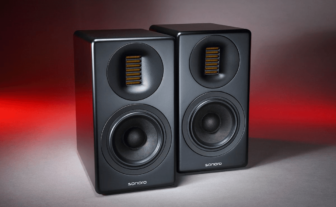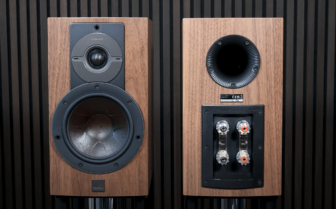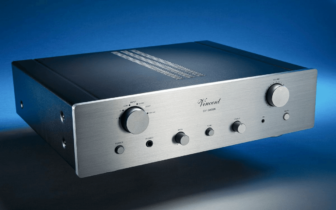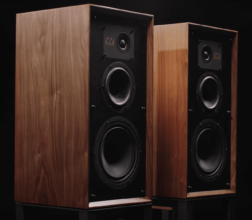Musical Fidelity A1 and Musical Fidelity LS3/5A Review
Musical Fidelity is bringing back its classic A1 integrated amplifier and adding its own take on the famous LS3/5A nearfield studio monitor, built to British Broadcasting Corporation (BBC) specifications. We’re very excited to see (and hear) what they’ve come up with.
by Tom Frantzen
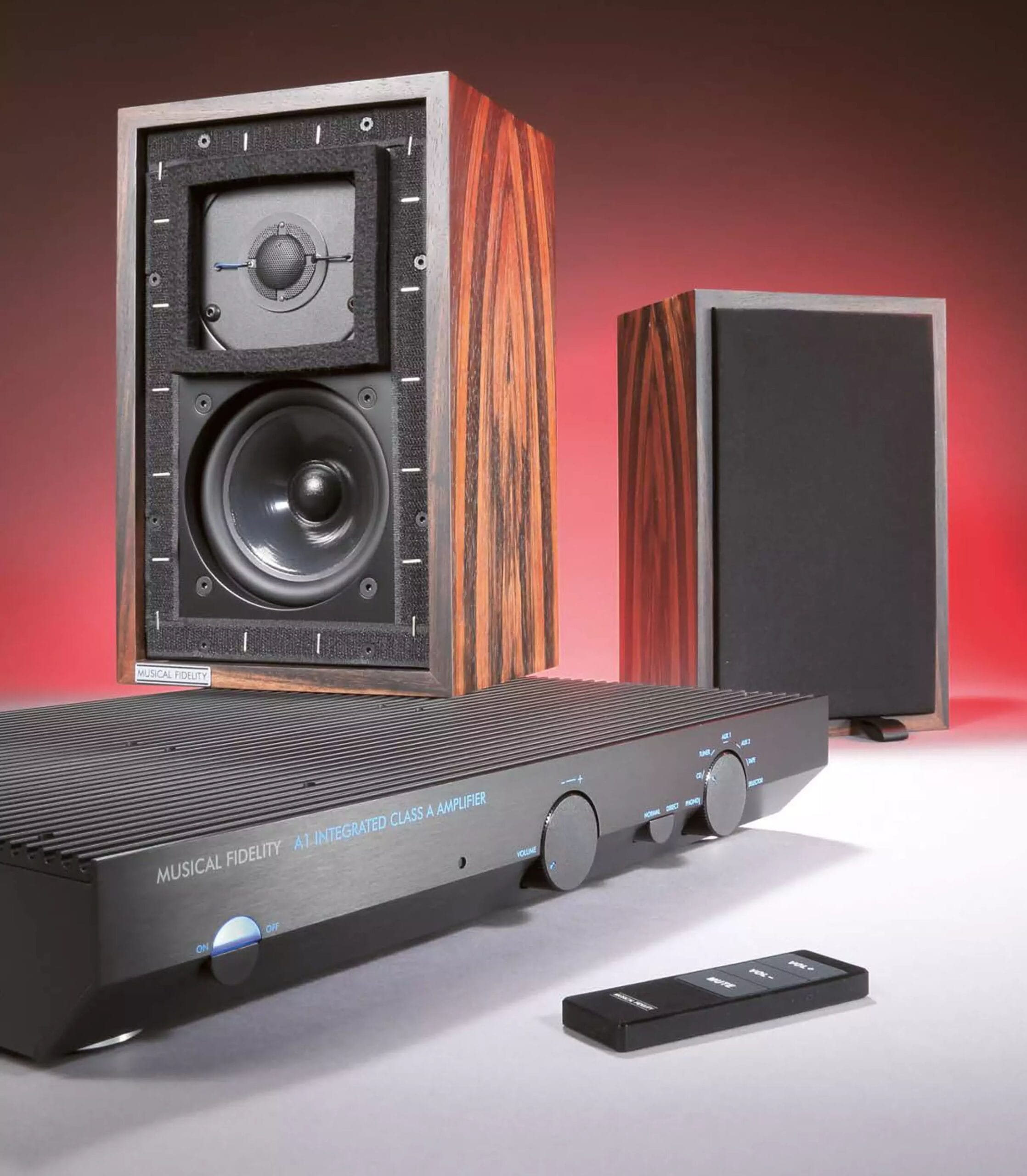
The speaker known as the LS3/5 or LS3/5A was originally developed by engineers at the BBC. During the 1970s, the BBC created monitors for professional studio work that they believed would offer neutral reproduction. The main goal was to achieve an uncolored midrange and fundamental tone, which capture the crucial qualities of the human voice and natural instruments. The aim was also to deliver seamless transitions, accurate timing, and smooth musical flow. Some British speaker manufacturers still rely on these principles today. They often test their speakers by listening to news broadcasts, where the natural quality of voices is the primary benchmark.
TEST DEVICES
Record Player: Micro Seiki MR-122 / Grado Prestige Black
CD Player: Audiolab 8300 CDQ, Cayin Mini-CD Mk2
Integrated Amplifier: Cyrus 3i, Exposure 2510 Integrated, Musical Fidelity Nu-Vista 800.2
Speakers: Neat Acoustics Petite Classic, PMC Prodigy 1
Cables: HMS, Silent Wire, Siltech, Supra
Professional History
The LS3/5A model name comes from “Loudspeaker 3 Version 5 (A).” From the start, it was designed for nearfield use in tight spaces, such as right next to the mixer or in an outside broadcast van. Strictly speaking, the LS3/5 was never meant for home living rooms, yet it can perform very well at distances of under two meters and up to nearly four meters. The mini-monitor was intended to provide the most linear and accurate playback between around 80/100 Hertz and 20 kilohertz, recognizing that lower frequencies require larger enclosures. Because the cabinet is sealed, the bass doesn’t go very deep, but it is incredibly precise, rich in texture, and fast. After it was introduced, this little speaker quickly made a name for itself and became both a bestseller and an industry standard among monitor speakers.

Being a broadcaster, the BBC naturally couldn’t—and didn’t want to—fulfill the large demand on its own, so over the decades, various manufacturers—Rogers, Spendor, Chartwell, Falcon, Graham, Harbeth, and KEF—produced their own versions. Harwood even offers a kit. The BBC licensed the design under strict requirements, including the 19 mm fabric dome, the 110 mm woofer cone, the 12 mm birch plywood with a bitumen layer for the cabinet, and the crossover design. Musical Fidelity’s LS3/5A follows the original “BBC R&D design 1976/29,” which is why it looks exactly as the original design specifies. After almost 50 years, you might think they’d adjust the look of the front panel, but fans of this iconic speaker wouldn’t hear of it. The clamps on the front look pragmatic and basic; if you don’t like them, just leave the grille on. By the way, the very high-quality rosewood finish from Musical Fidelity contrasts sharply with the utilitarian front. The build quality and design are exquisite, and it wouldn’t be surprising if it cost more than its roughly $2,700 pair price.
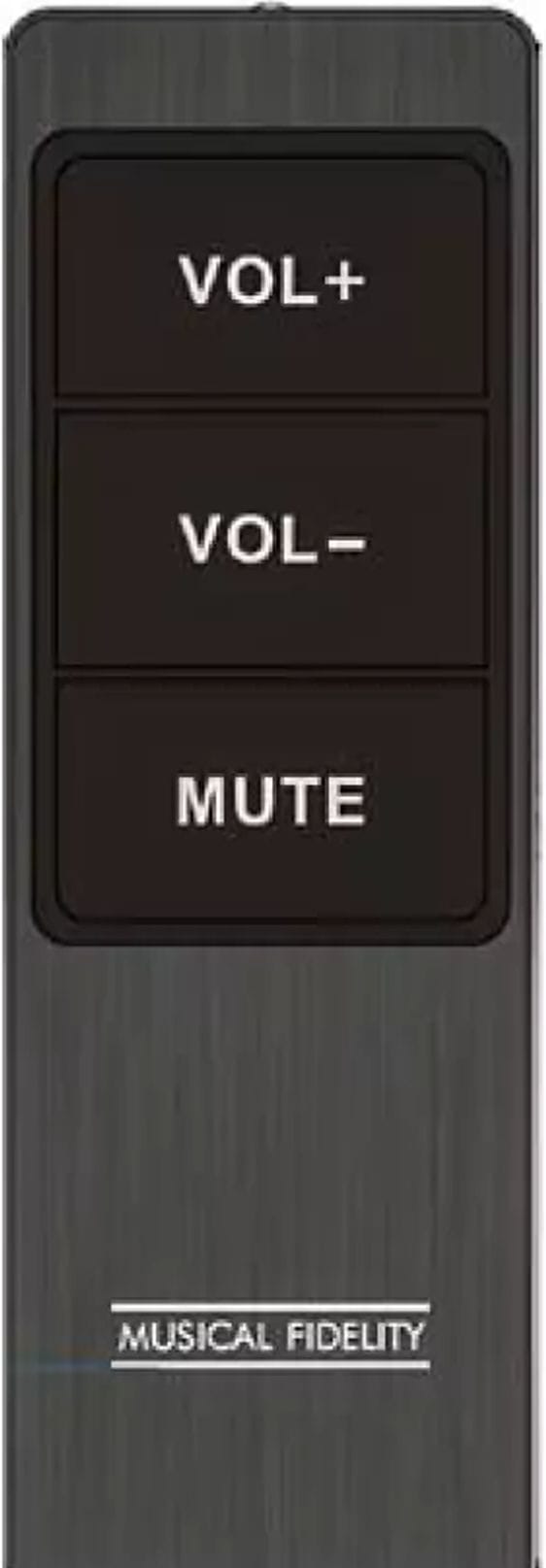
There’s remote control for volume and mute, but that’s about it. The A1 stays true to its late-’80s roots.
Amp Classic
Musical Fidelity introduced the A1 integrated amplifier around 1985. Delivering about 20 to 30 watts per channel in a “crossover-distortion-free,” dynamic Class A design, it came in a slim enclosure, with minimal negative feedback as shown by measurements, straightforward features, and an all-in commitment to sound quality. Weighing around twelve kilograms, it’s a perfect match for the LS3/5A’s high impedance of around 15 ohms. The fan base of this amp is huge—enthusiasts affectionately call it the “waffle iron” because it runs quite hot. While later Musical Fidelity amps like the B1 or Caruso borrowed some styling elements, many people apparently missed the bold sound quality and distinctive charm of the original A1. In 2022, just in time for a major audio show, Musical Fidelity brought out a new version of this almost identical device, nearly 40 years after its first release.
Sophisticated
The new A1 still has a fully discrete, symmetrical design, but now includes a high-quality phono preamp for MM and MC cartridges (with adjustable input impedance), plus five high-level inputs. You also get pre-outs for connecting active speakers or for bi-amping. You can reduce total system gain by 10 dB through the “Direct” function before the volume control. Low-noise TL071 JFETs are used in the preamp, just as in the original. In the power amp stage, they use complementary audio transistors with a 25 amp peak current capacity, along with improved, channel-separated power supplies that are even filtered for better performance. Essentially, the circuit is only slightly modified; however, they did upgrade where possible with better, more durable parts. The Alps volume potentiometer is now motorized so that you can use remote control.
As with any Class A design, if you push it too hard, eventually the amp will slip into Class B operation—but that’s more of a footnote. Class A runs hot, which goes against today’s energy-saving trend, but at least your fridge can offset it. The only real drawback here is the missing headphone jack. The price has doubled since it first came out decades ago, but that’s understandable. With this move, Musical Fidelity combines two legendary products that appear made for each other, resulting in a single, highly musical and audiophile system.
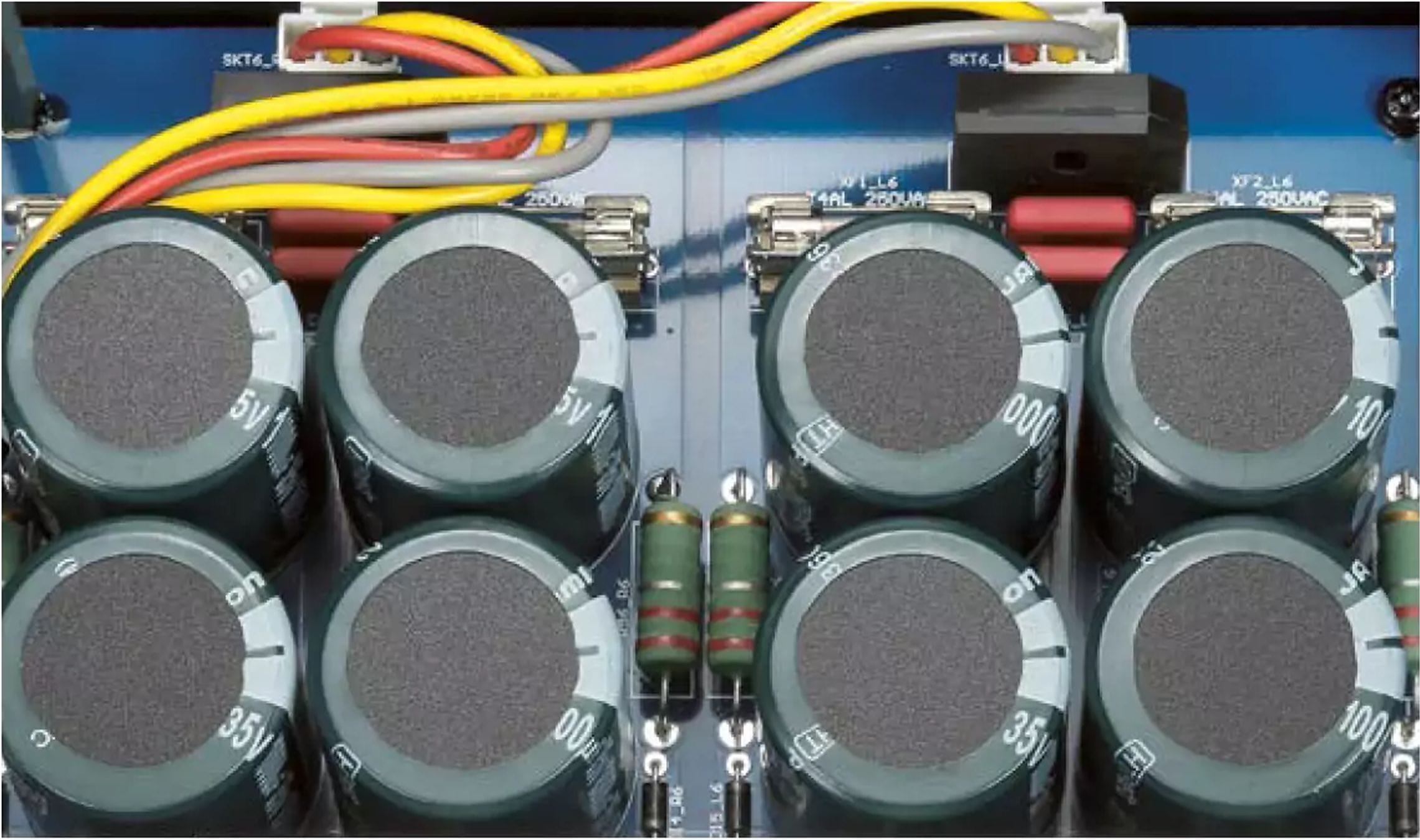
The power supply is absolutely critical for any amplifier, so Musical Fidelity made it large and robust, including a good amount of capacitance for smoothing.
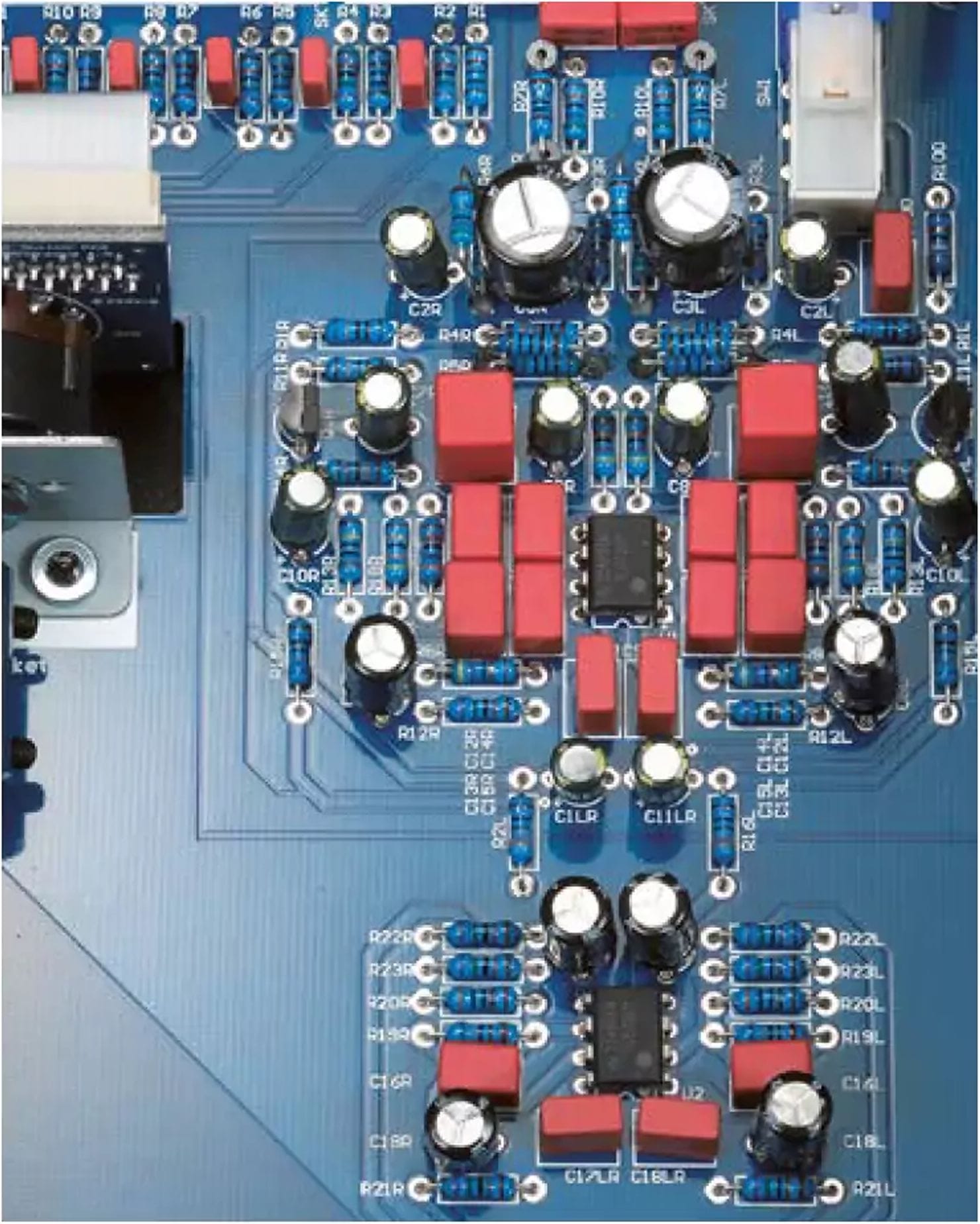
The phono board in the Musical Fidelity amp is assembled with high-quality parts and allows easy switching between MC and MM cartridges.
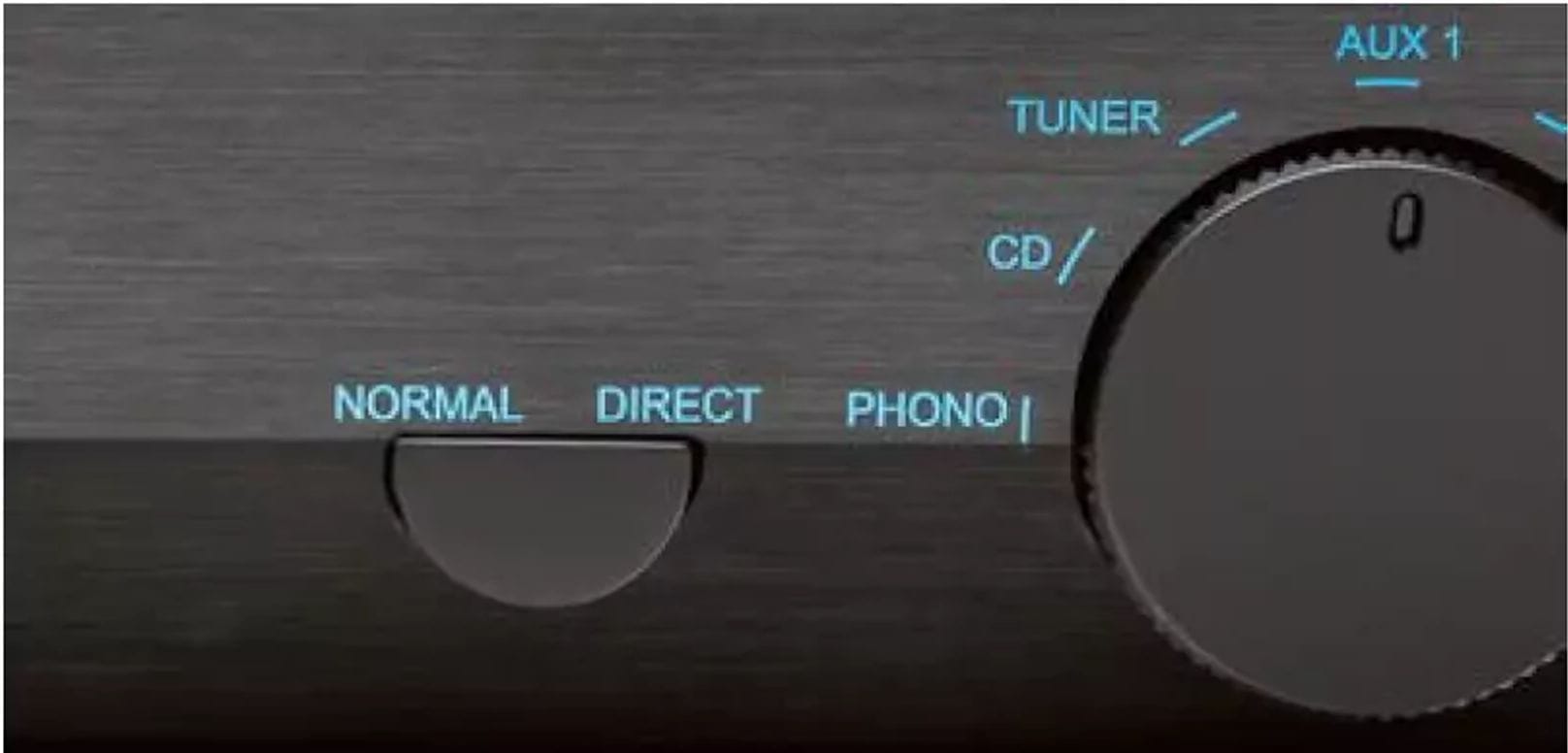
This integrated amplifier has a very simple layout, extended only by the inclusion of remote control—fitting perfectly with the minimalist idea behind the A1.
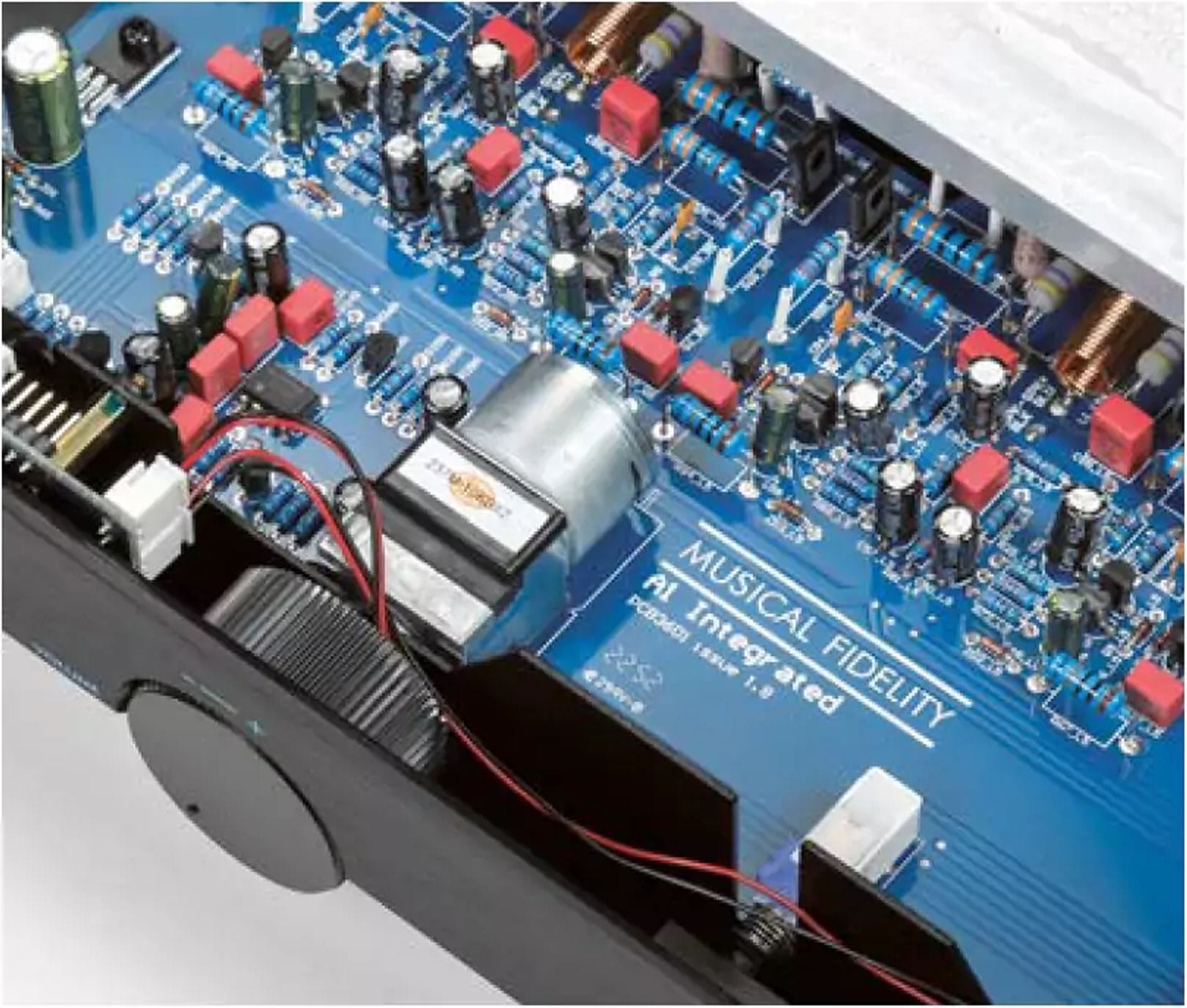
An electric motor on the volume control pot is essential for remote functionality. The circuit board shows “Version 1.5” of the A1.
THIS IS WHAT WE LISTENED TO
Al Stewart: Year Of The Cat
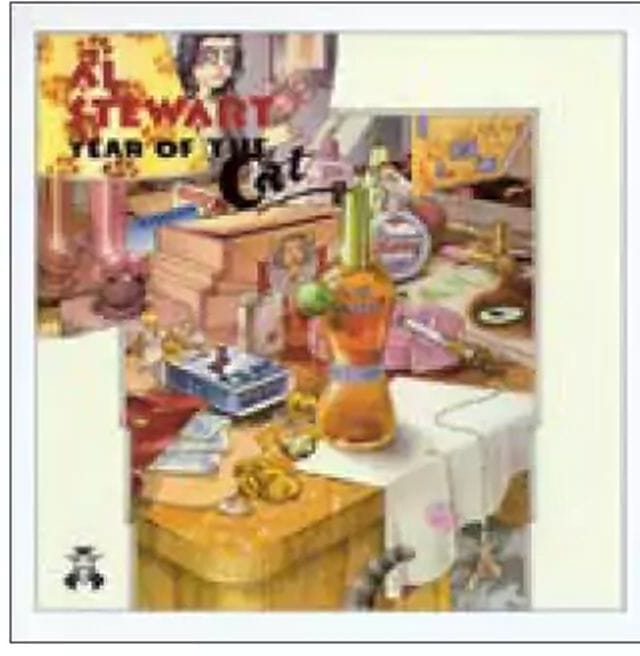
This recording was already known for its top-notch sound engineering at the time.
Chuck Mangione: A&M Gold Series
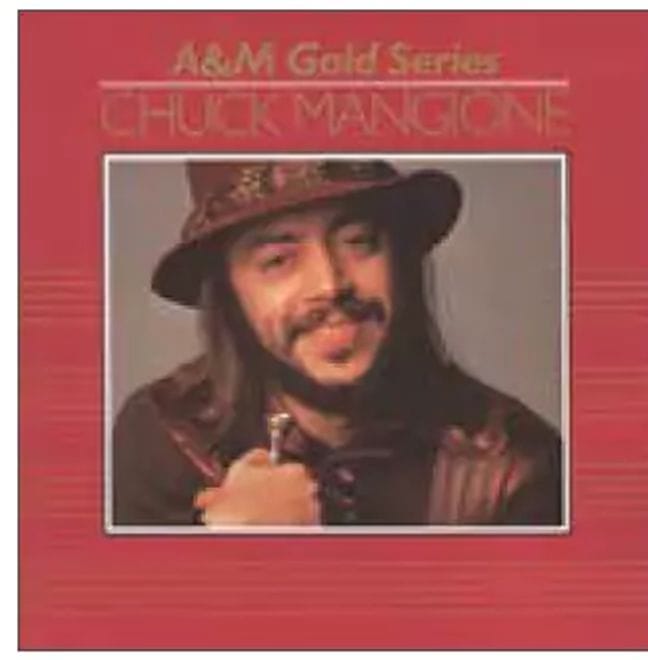
A random discovery of this masterful compilation.
These two products truly seem made for one another, forming a uniquely musical and audiophile combination.
Sound? Overwhelming!
The A1 and LS3/5A pairing offers a rich, colorful sound of outstanding quality. It’s exceptionally delicate, precise, and expressive. The soundstage is broad and layered in depth. The midrange, in particular, is incredibly natural and fatigue-free, with a slight warmth that’s very pleasing. The treble is fine and shimmering, while the lower midrange is delivered with real heft. Small ensembles are presented in a striking, sometimes spectacular way, offering pure emotion. But “spectacular” here doesn’t mean loads of special effects; the little details appear in a natural context. Most of all, everything feels balanced across the entire frequency range—no boosted bass or harsh treble to create a false sense of speed and detail. One might simply call it “smooth.”
We’ve all heard expensive systems that lack a sense of cohesive musicality—this one doesn’t. Its naturalness never tires you out. That’s the real secret, and it applies no matter the price category. I’d even guess that most people have never heard music reproduced at such a high level. This system runs about $4,400, plus a source—for example, a Musical Fidelity M3 SCD—along with decent stands and basic but quality cables (like from Supra). That won’t break anyone’s budget.
The luxurious rosewood finish is a perfect visual match to the exceptional sound.
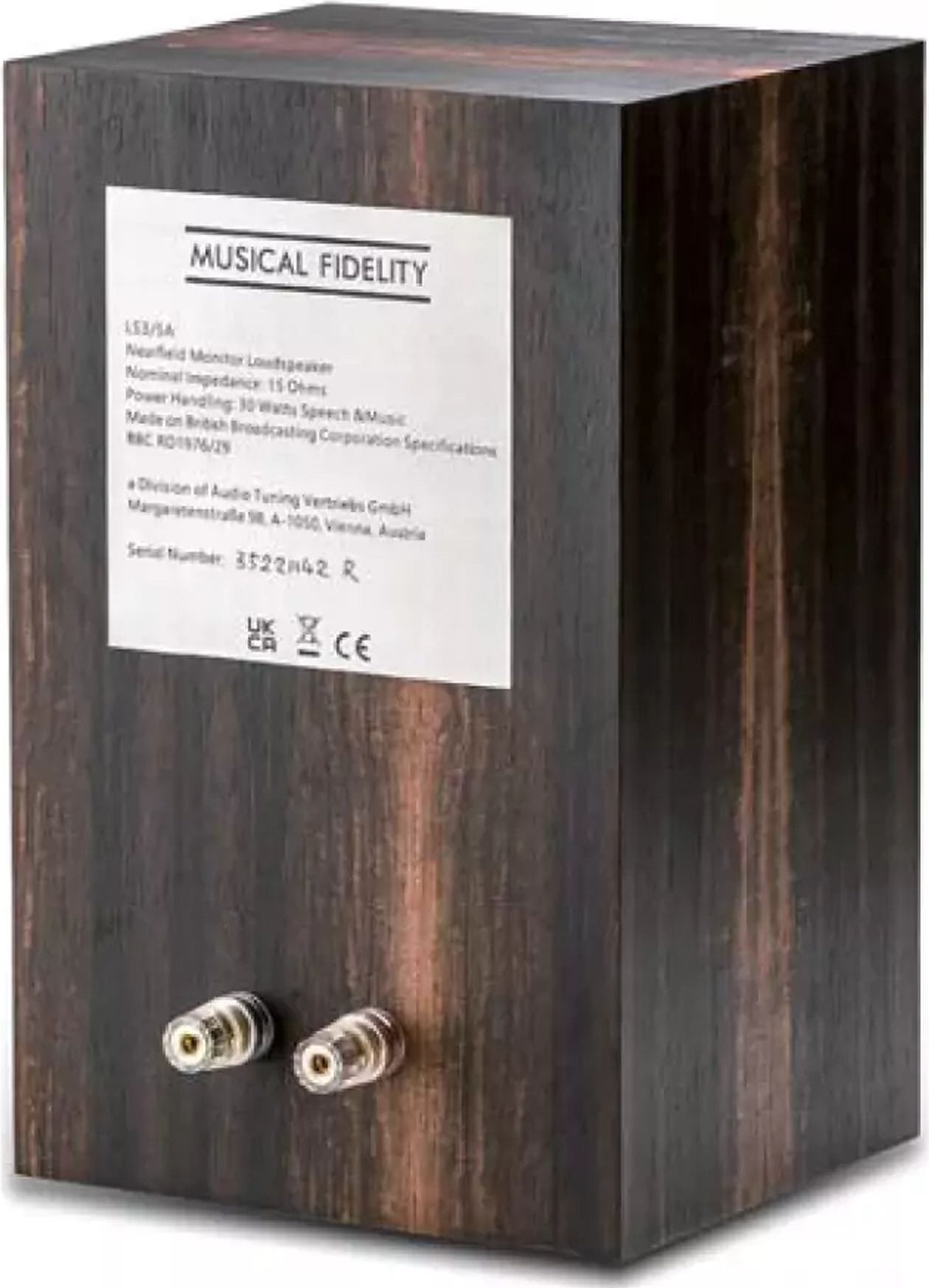
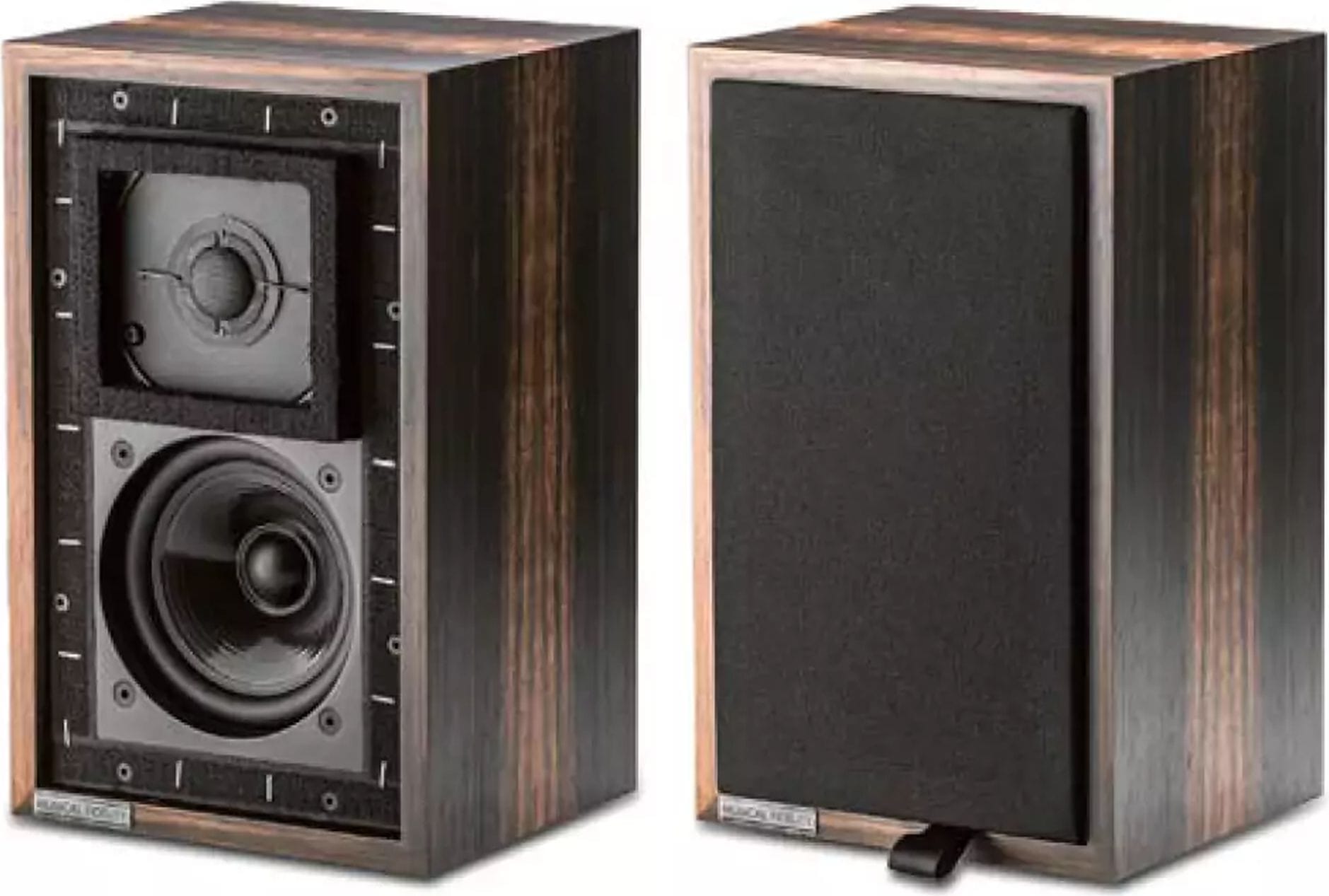
Yes, even a modern version of the legendary LS3/5A still needs to look just like the original—clamps and all.
In a more adventurous mood, we tested how it handles big orchestral works or high-energy rock. Amazingly, it holds up well until you push it significantly above normal listening levels. Eventually, the limited power of this nearfield system will be noticeable with something like Dvořák or AC/DC, but not until it’s quite loud. The soundstage might shrink a bit, but it stays transparent and clearly structured, which is very impressive. Basically, you can listen to any genre. A heavy metal fan might prefer something else or use a separate system. By the way, for my own truly indulgent listening sessions, I also use a 3/5-type speaker, though driven by a similar EL34 tube amp.
Compared to bigger gear—like the powerful Musical Nu-Vista 800.2 driving large floorstanders—you don’t feel you’re missing much. This duo sounds full and expansive even at moderate volume. It’s fantastic.
Musical Fidelity has unquestionably succeeded in reviving two classic products and creating a truly enthralling audio setup. This is one for the real connoisseur. 😉
Musical Fidelity A1 Specs
Price: around $1,700 (Black)
Dimensions: 44x7x29 cm (WxHxD)
Warranty: 3 years
- Continuous Output Power
- 8 Ω: 28 W
- 4 Ω: 21 W
- Pulse Power at 4 Ω (1 kHz): 36 W
- THD (Klirrfaktor) at 50 mW / 5 W / −1 dB from Pmax
- 50 mW: 0.019 %
- 5 W: 0.25 %
- −1 dB Pmax: 0.69 %
- Intermodulation Distortion (Intermodulation, “Interm.”) at 50 mW / 5 W / −1 dB Pmax
- 50 mW: 0.0087 %
- 5 W: 0.185 %
- −1 dB Pmax: 0.58 %
- Signal-to-Noise Ratio (SNR) at 50 mW / 5 W
- 50 mW: 59 dB
- 5 W: 93 dB
- SNR Phono MM (5 mV input for 5 W output): 69 dB(A)
- SNR Phono MC (0.5 mV input for 5 W output): 64 dB(A)
- Damping Factor at 4 Ω (63 Hz / 1 kHz / 14 kHz): 4 / 4 / 4
- Upper Cutoff Frequency (−3 dB at 4 Ω): 62 kHz
- Channel Crosstalk (Line 1 → Line 2): 67 dB
- Volume Control Channel Balance Error (Gleichlauffehler) at −60 dB: 0.5 dB
- Stereo Channel Separation at 10 kHz: 63 dB
- Idle Power Consumption (Leistungsaufnahme Leerlauf): 110 W
- Weight: 12 kg (12,000 g)
A modern reincarnation of a classic from 1988, built to prioritize sound over technical measurements. It’s a Class A design with MM/MC phono, perfect for small monitors in smaller rooms, and highly musical.
Musical Fidelity A1 Test Results
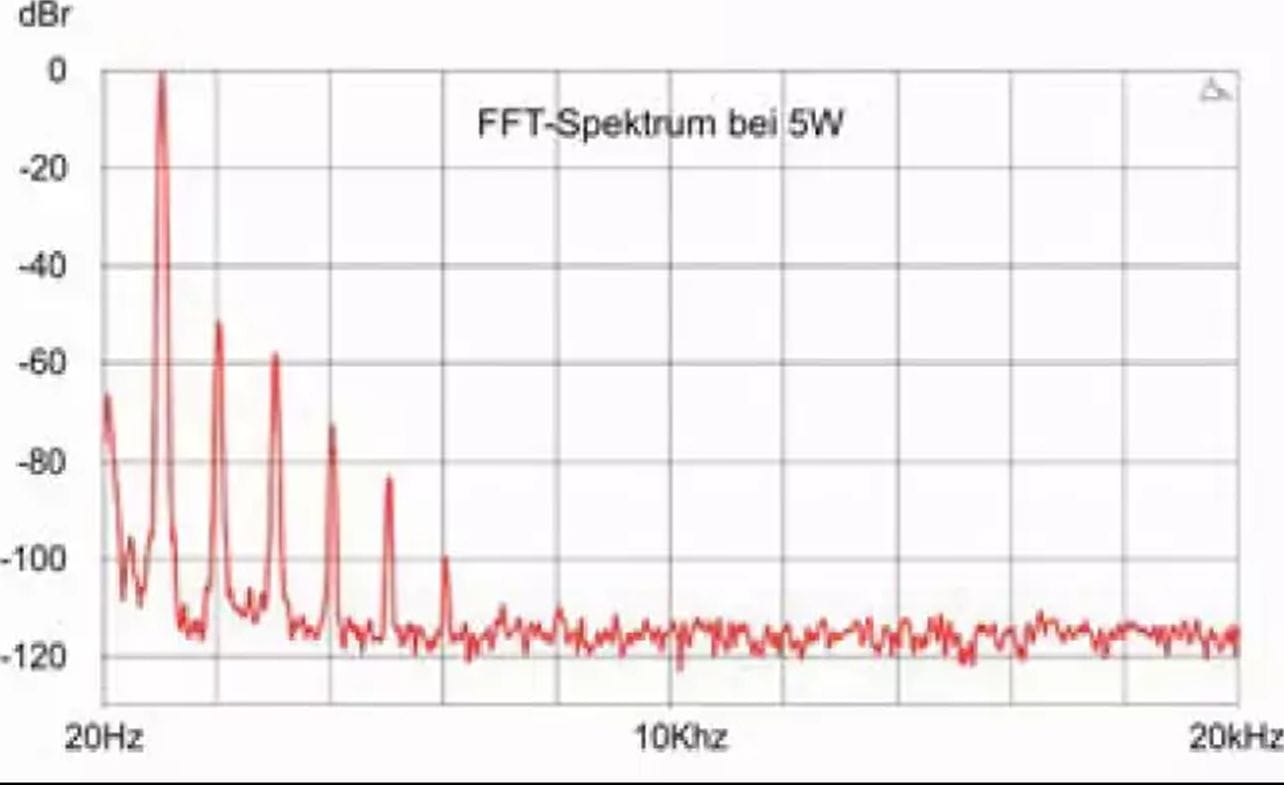
Lab Comment: Output power is a modest 20 watts into 4 ohms and nearly 30 watts into 8 ohms, with about 35 watts available for peaks. Distortion is very low at small levels but rises at moderate volume. Background noise levels are fine. Damping factor is low, but bandwidth is good.
Equipment: Remote control, MM/MC phono, Class A power amp, 5 x high-level inputs (RCA), RCA pre-out, fixed RCA output
Musical Fidelity LS3/5A Specs
Price: around $2,700 (Rosewood)
Dimensions: 19x31x20 cm (WxHxD)
Warranty: 2 years
DC Resistance (DC-Widerstand): 15 Ω
Minimum Impedance: 6.6 Ω at 152 Hz
Maximum Impedance: 37.5 Ω at 84 Hz
Sensitivity (Kennschalldruck at 2.83 V / 1 m): 83.5 dB SPL
Power Required for 94 dB SPL: 6.12 W
Lower Cutoff Frequency (−3 dB SPL): 78 Hz
Distortion (Klirrfaktor) at 63 Hz / 3 kHz / 10 kHz:
- 63 Hz: 0.85 %
- 3 kHz: 0.10 %
- 10 kHz: 0.125 %
Weight: 4.9 g
A nearfield monitor following BBC specifications, resurrected with modern production values. It remains an absolutely remarkable speaker for small ensembles, chamber music, and vocals, especially in smaller rooms.
Musical Fidelity LS3/5A Test Results
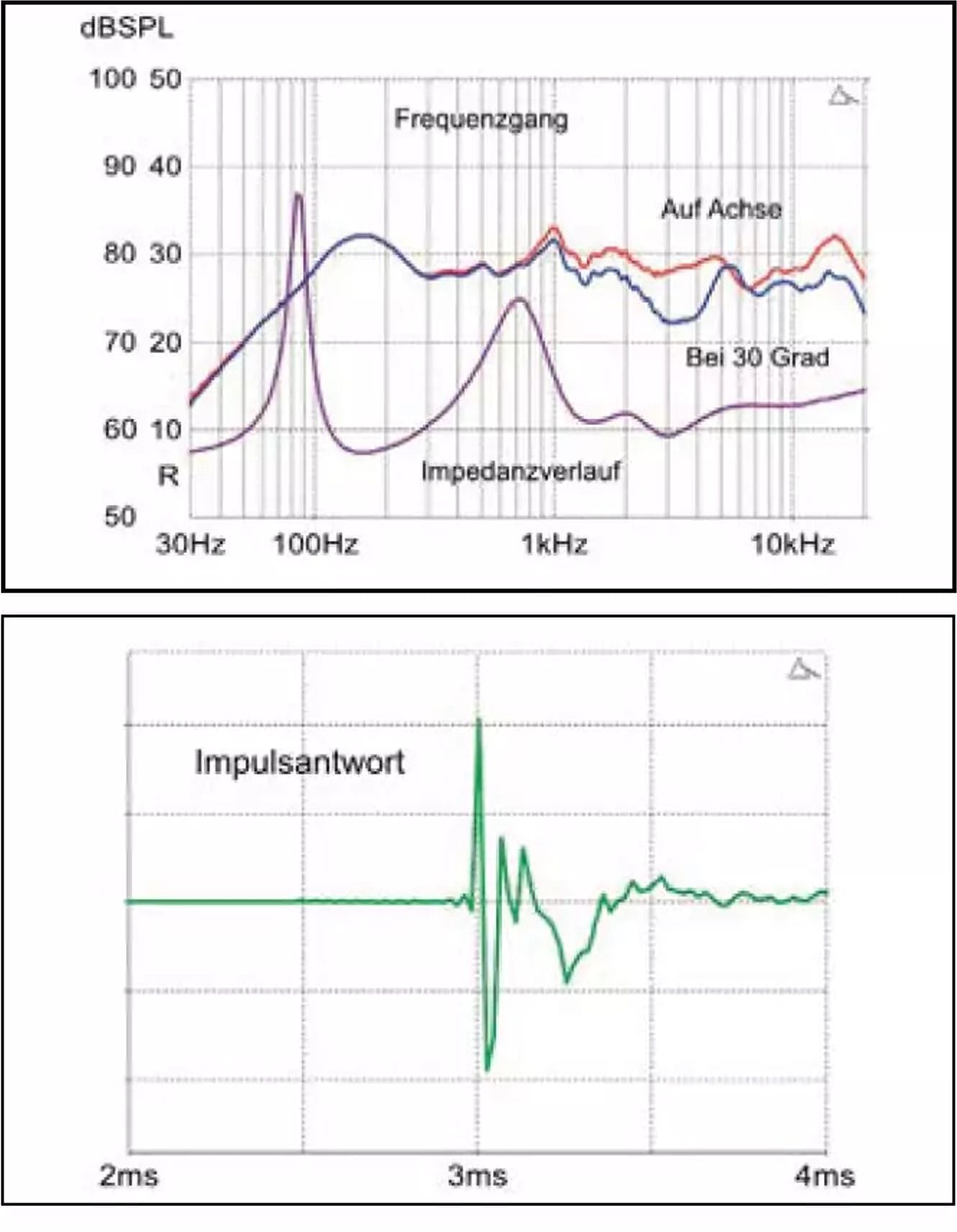
Lab Comment: The frequency response is well balanced down to around 80 Hertz. Sensitivity is moderate (83.5 dB). Impedance is forgiving (no extra tweaks needed). Timing is good, and distortion in the midrange/treble is very low.
Equipment: Closed two-way compact monitor with single-wire binding posts and grille
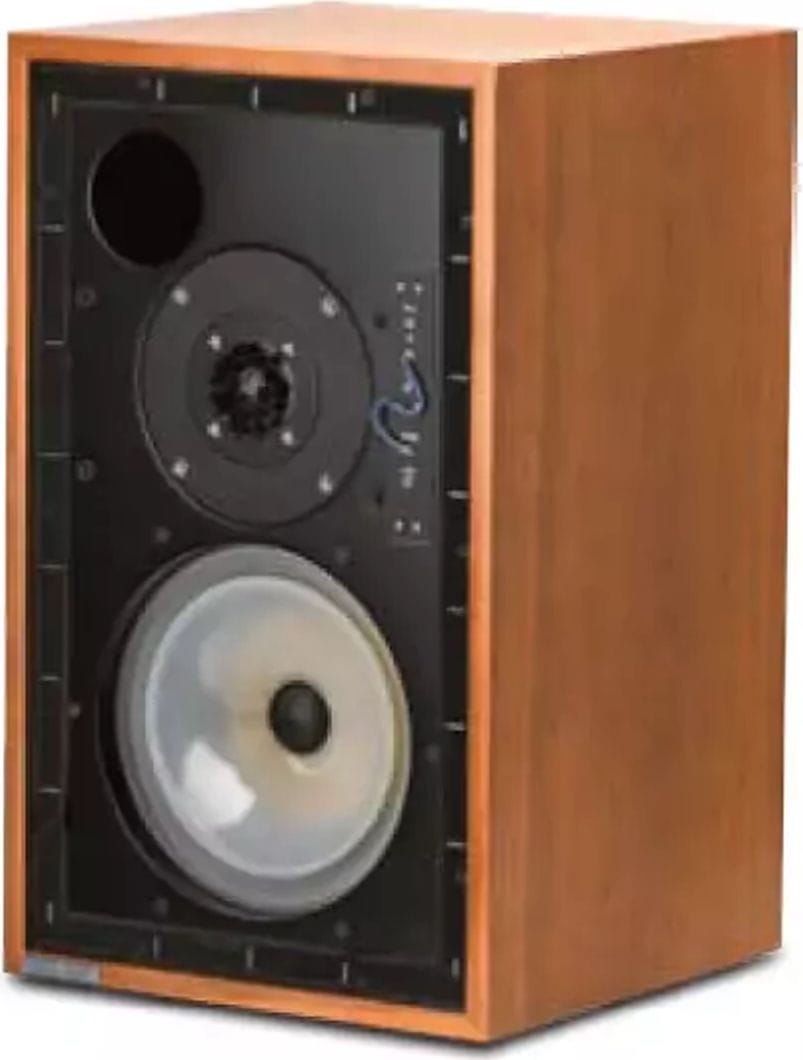
Musical Fidelity’s larger LS5/9 model is now also available.



